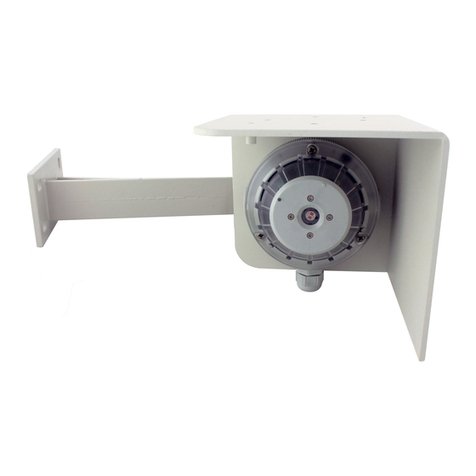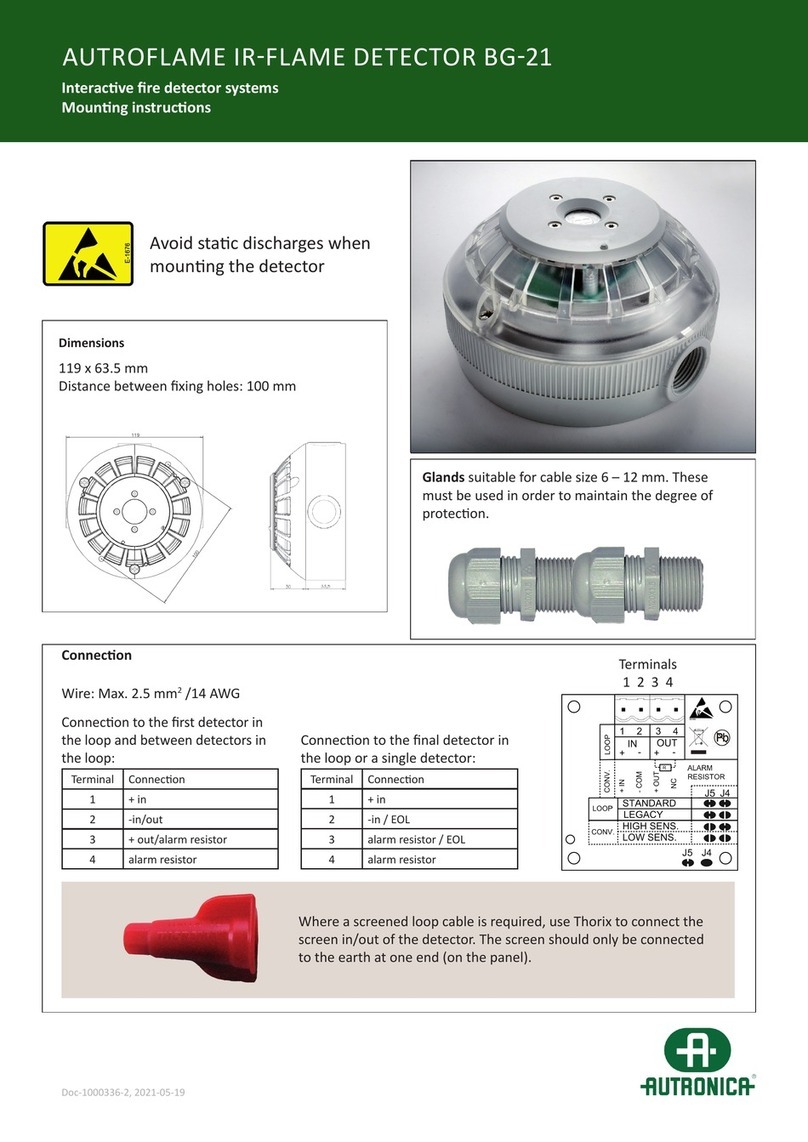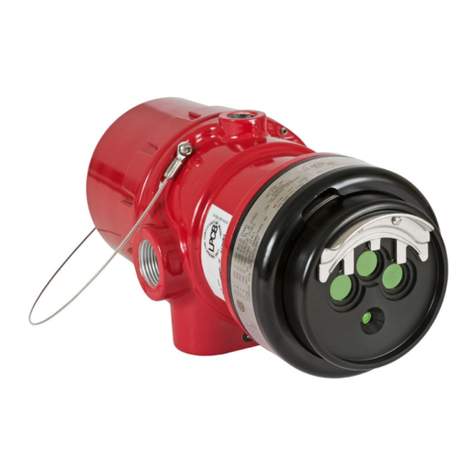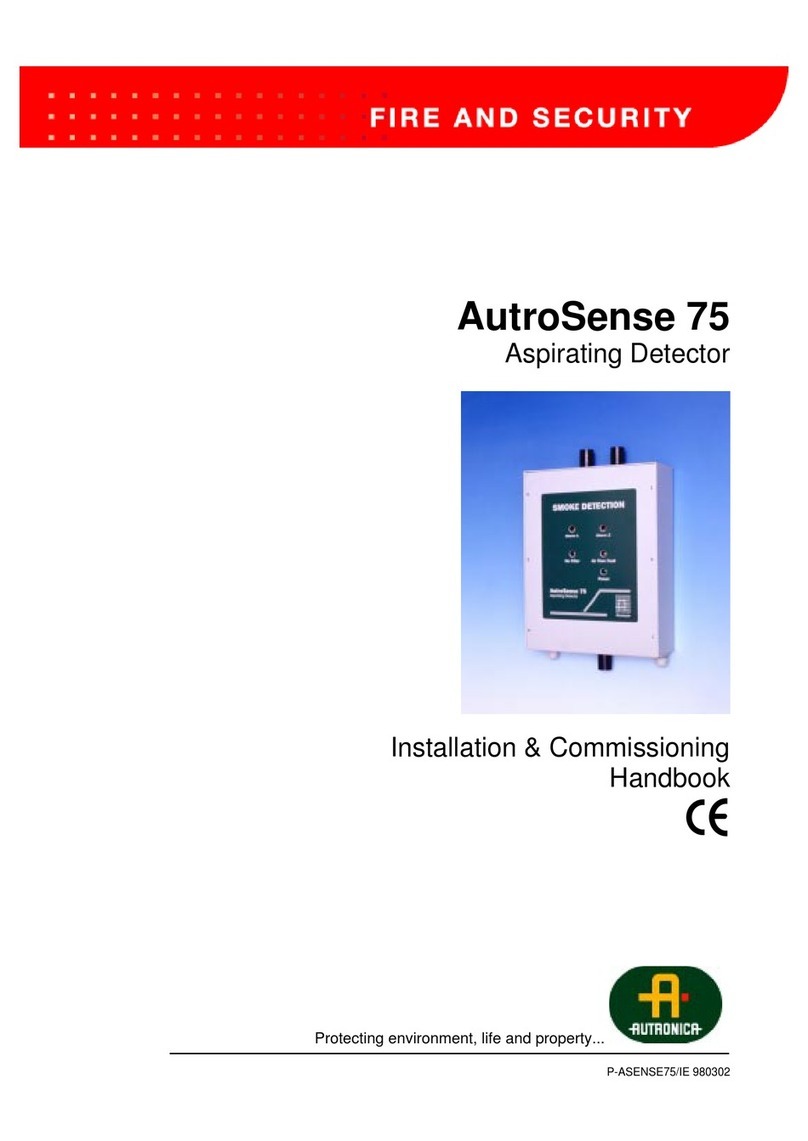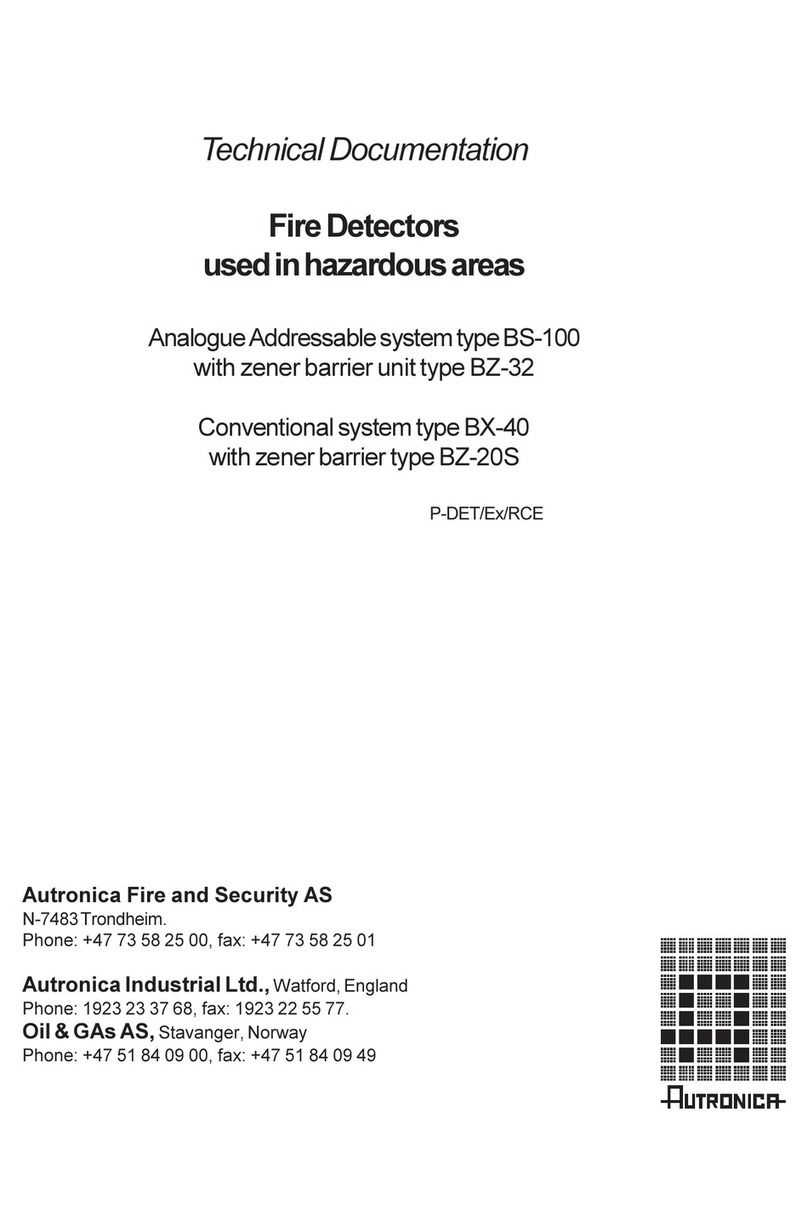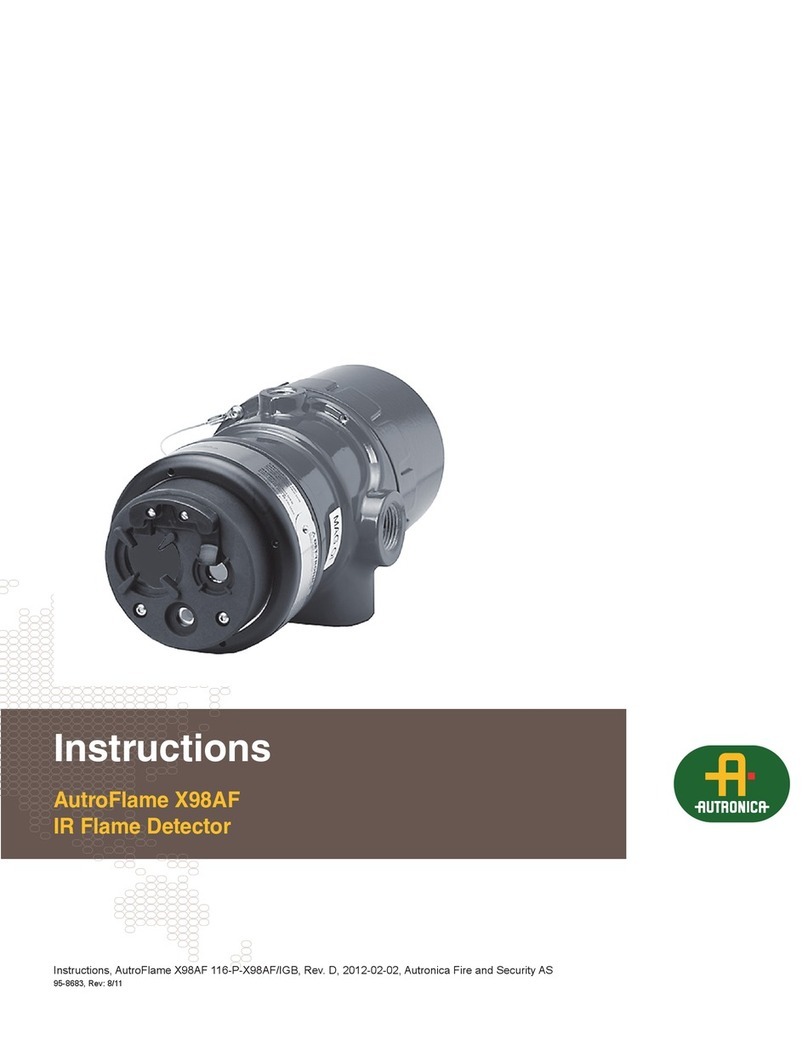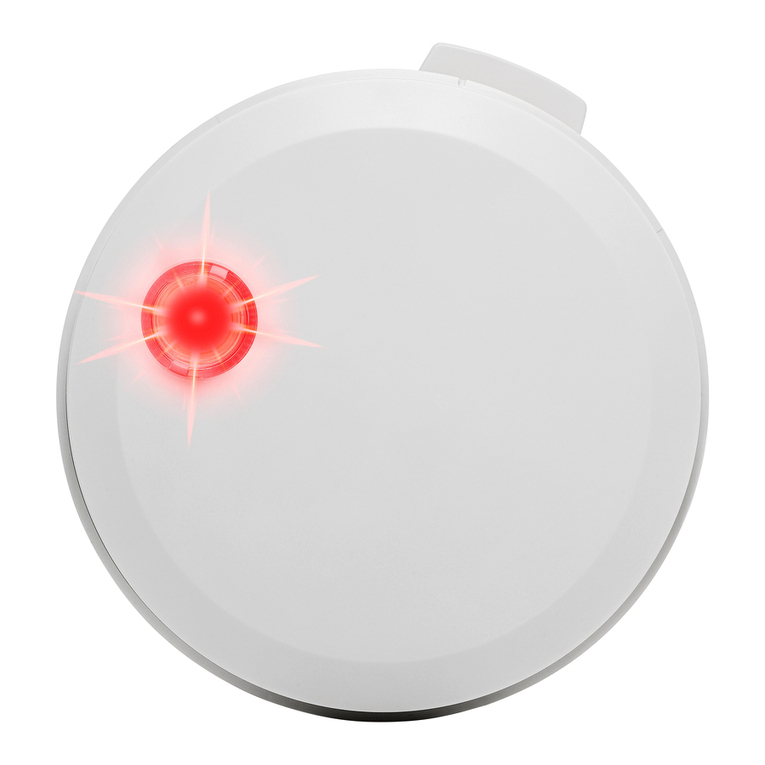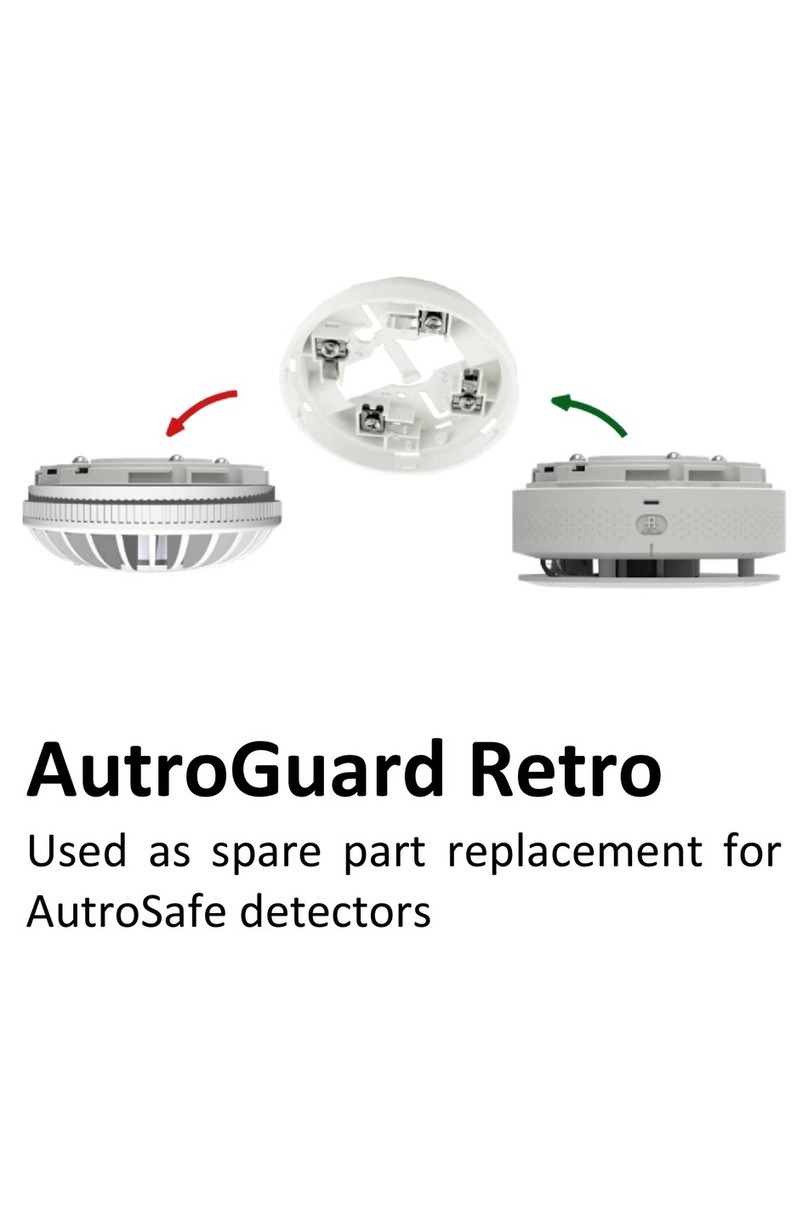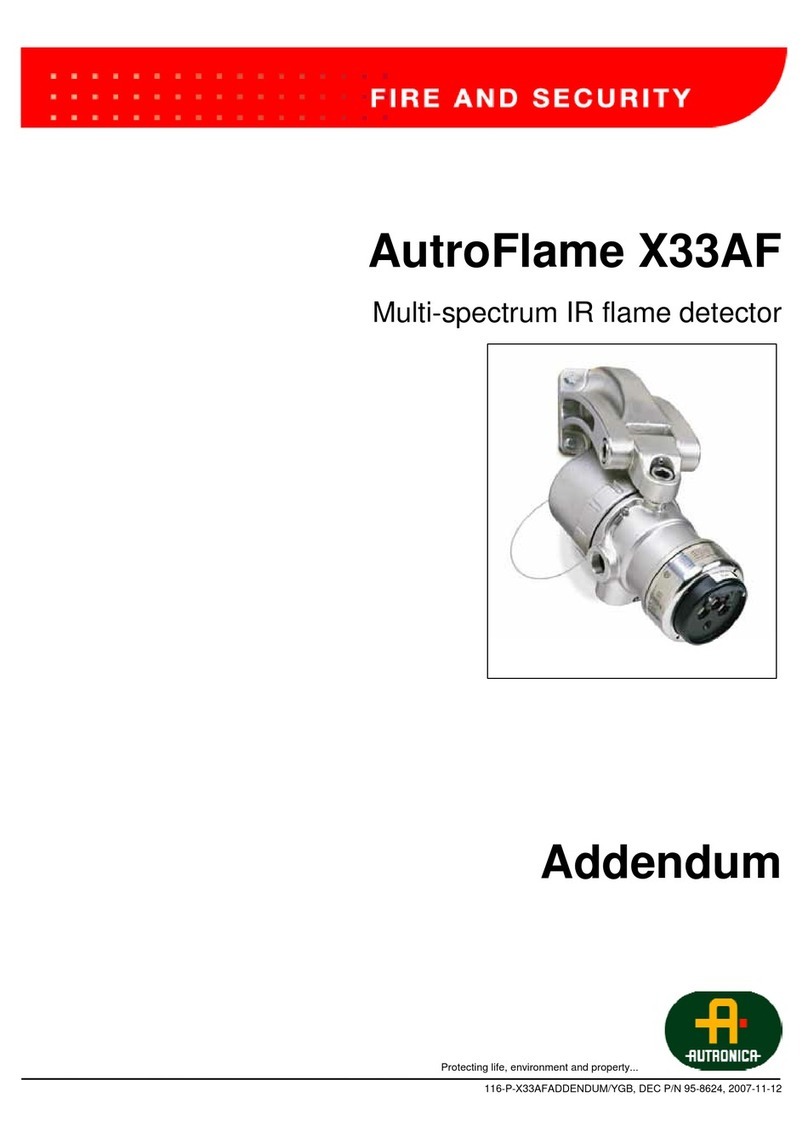
Instructions, AutroFlame X33AFPL, 116-P-X33AFPL/IGB, rev. A, 2016-11-04
P/N 95-8750, v2.4, rev. 1/16
Autronica Fire and Security AS
DATA LOGGING
Data logging capability is also provided. Status conditions
such as normal, power down, general and
oi
faults, pre-
alarm, re alarm, time and temperature are recorded.
Each event is time and date stamped, along with the
temperature and input voltage. Event data is stored in
non-volatile memory when the event becomes active, and
again when the status changes. Data from the log can
only be extracted at the factory.
INTEGRAL WIRING COMPARTMENT
All external wiring to the device is connected within the
integral junction box. The detector is furnished with four
conduit entries, with M25 threads.
DETECTOR SENSITIVITY LEVELS
There are four factory congured sensitivity levels
available for the X33AF PL Flame Detector:
Very High, Medium, Low and T-Low.
The following criteria should be considered when
choosing a sensitivity level for the intended application:
• Detector placement
• Speed of response based on fuel type and re size
(see Appendix A for response times)
• Distance between the hazard and the ame
detector
Additional information on X33AF PL Flame Detector
performance results and sensitivities can be found in
Appendix A, the FM Approval and Performance Report.
Consult the factory with any questions on how to choose
the optimum sensitivity level for the intended application.
GENERAL APPLICATION
INFORMATION
RESPONSE CHARACTERISTICS
Response is dependent on the detector's sensitivity
setting, distance, type of fuel, temperature of the fuel, and
time required for the re to come to equilibrium. As with
all re tests, results must be interpreted according to an
individual application.
See Appendix A for third-party approved re test results.
Additional re test results are available from Autronica.
IMPORTANT APPLICATION CONSIDERATIONS
In applying any type of sensing device as a re detector,
it is important to know of any conditions that can prevent
the device from responding to re, and also to know
what other sources besides re can cause the device to
respond.
Welding
It is recommended that the system be bypassed
during welding operations in situations where the
possibility of a false alarm cannot be tolerated. Gas
welding mandates system bypass, since the gas torch
is an actual re. Arc welding rods can contain organic
binder materials in the ux that burn during the welding
operation and are detectable by the X33AF PL. Welding
rods with clay binders do not burn and will not be detected
by the X33AF PL. However, system bypass is always
recommended, since the material being welded may be
contaminated with organic substances (paint, oil, etc.)
that will burn and possibly cause the X33AF PL to alarm.
Due to the possibility of an alarm condition, arc welding
should not be performed within 40 feet (12.2 m) of the
detector configured to very high sensitivity, within 10
feet (3.0 m) at medium sensitivity, within 5 feet (1.5 m)
at T-Low sensitivity, or at Low sensitivity.
Articial Lighting
The X33AF PL should not be located within 3 feet (0.9 m)
of articial lights. Excess heating of the detector could
occur due to heat radiating from the lights.
EMI/RFI Interference
The X33AF PL is resistant to interference by EMI and RFI,
and is EMC Directive compliant. It will not respond to a
5 watt walkie-talkie at distances greater than 1 foot. Do
not operate a walkie-talkie within 1 foot of the X33AF PL.
Non-Carbon Fires
The X33AF PL is a multiple spectrum IR device with
detection limited to carbonaceous fuels. It should not be
used to detect res from fuels that do not contain carbon,
